What do a multi-disciplined Japanese design studio and a Twentieth century master of optical illusion have in common? The latest exhibition at the National Gallery of Victoria: Escher X nendo | Between Two Worlds.
Pushing forward the relationship between art and design, the National Gallery of Victoria’s latest exhibition – Escher X nendo | Between Two Worlds – is a world first. The premise of the show is to create a dialogue between the work of Dutch artist M. C. Escher and Japanese design studio nendo, led by Oki Sato.
The show seamlessly presents the worlds of one of the 20th century’s most recognisable artists and one of the 21st century’s most inventive designers, including more than 150 of Escher’s most renowned prints and drawings from the collection of Gemeentemuseum in The Hague. Housing these arresting drawings is an immersive exhibition space designed by nendo, accompanied by original work that responds to the methodologies of the Dutch master.
The work of M. C. Escher is famed for intriguing viewers through visual puzzles and testing ideas of space and time in the everyday. Escher’s work depicts impossible architectural structures, endless staircases and seamless transformations of form and pattern. His fantastical constructions and repetitive infinity patterns reveal a technical and inventive genius that in recent years has become increasingly revered and celebrated.

M. C. Escher Hand with reflecting sphere (Self-portrait in spherical mirror) January 1935 lithograph Escher Collection, Gemeentemuseum Den Haag, The Hague, the Netherlands © The M. C. Escher Company, the Netherlands. All rights reserved.
Building on Escher’s optical illusions to create an otherworldly spatial installation, nendo has taken cues from Escher’s manipulation of space and his use of shifting perspectives and playful visual devices. These have inspired the creation of an exhibition experience that transcends traditional gallery displays and manifests Escher’s world in a three-dimensional reality.

M. C. Escher. Regular division of the plane no. 105 (Pegasus) June 1959 pen and ink, pencil and watercolour on graph paper. Escher Collection, Gemeentemuseum Den Haag, The Hague, the Netherlands © The M. C. Escher Company, the Netherlands. All rights reserved.
nendo has devised a signature motif for the exhibition design − the minimalist form of a house − universally understood as an icon and symbol of space. The house appears throughout the exhibition in varied forms that reference Escher’s skilful manipulation of patterns as well as creating innovative displays for Escher’s work.
In the lead up to the exhibition, Indesign magazine’s editor Alice Blackwood interviewed the Japanese wunderkind, below is an extract which can be read in full in the latest issue of the mag.
Oki Sato: I was interested to learn of the obsessive nature of Escher’s working process, and the passion he had for his creations. It is quite clear that Escher did what he really loved doing, and I feel that we have this in common. I found [however] the differences to be more interesting and inspiring.
For example, Escher created three-dimensional expressions in two-dimensional techniques. I am just the opposite, which creates an interesting contrast in this collaboration. A less obvious difference between us is in the creation process and the examination of new ideas. Escher took a ‘seed’ of an idea and pushed it to its limit. He tested one idea in many ways using different techniques, tools and methods.
My process is to bring new seeds of ideas to every project I work on. Generating new ideas is an inseparable part of my process. While Escher evolved ideas in a very logical, mathematical way, I work more intuitively, with reality-based inspirations. So in this exhibition I tried to [integrate] the nendo ‘seeds’ in the Escher logical thought process. Since both processes require a lot of energy, my brain is already very tired. But I truly enjoyed this process, and it has brought a fresh point of view into our office.
Oki Sato: I find a project appealing when it is difficult for me to imagine the final output, or when I cannot perceive the impact of its completion. This is when I feel excited about an opportunity. It’s the same feeling I get when I experience something [for the first time], like using an unfamiliar object or technology. A project that has a level of uncertainty, and makes you feel a bit anxious, is a project worth jumping into.
Escher X nendo | Between Two Worlds is open at the National Gallery of Victoria until 7 April 2019.
INDESIGN is on instagram
Follow @indesignlive
A searchable and comprehensive guide for specifying leading products and their suppliers
Keep up to date with the latest and greatest from our industry BFF's!

For those who appreciate form as much as function, Gaggenau’s latest induction innovation delivers sculpted precision and effortless flexibility, disappearing seamlessly into the surface when not in use.
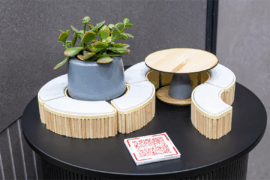
From the spark of an idea on the page to the launch of new pieces in a showroom is a journey every aspiring industrial and furnishing designer imagines making.

In an industry where design intent is often diluted by value management and procurement pressures, Klaro Industrial Design positions manufacturing as a creative ally – allowing commercial interior designers to deliver unique pieces aligned to the project’s original vision.

Former INDE Luminary LeAmon joins the Design Institute of Australia (DIA) following more than a decade as the inaugural Curator of Contemporary Design and Architecture at the National Gallery of Victoria (NGV).
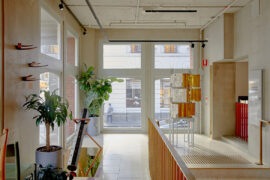
Stylecraft and NGV call for furniture and lighting designs addressing small-space living, with $20,000 prize and commercial development opportunity.
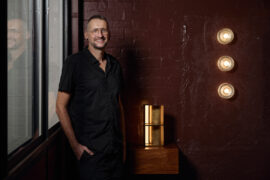
Celebrating ten years of creative impact, Melbourne Design Week 2026 invites designers, studios, and collectives to submit expressions of interest for its statewide program and the Melbourne Art Book Fair.
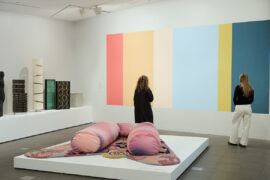
At the NGV’s Making Good: Redesigning the Everyday, design becomes a force for repair. From algae-based vinyl to mycelium earplugs, the exhibition proves that rethinking the ordinary can reshape our collective future.
The internet never sleeps! Here's the stuff you might have missed

BLP’s new Sydney Children’s Hospital, Randwick building brings together paediatric care, family-centred design and Australia’s first Children’s Comprehensive Cancer Centre in a major addition to the Randwick Health & Innovation Precinct.

Merging two hotel identities in one landmark development, Hotel Indigo and Holiday Inn Little Collins capture the spirit of Melbourne through Buchan’s narrative-driven design – elevated by GROHE’s signature craftsmanship.
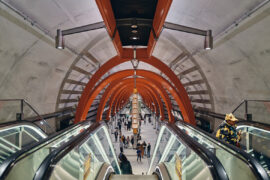
A collaboration between Hassell, Weston Williamson + Partners (WW+P Architects) and Rogers Stirk Harbour + Partners (RSHP) sees the opening of five new underground stations.

The Simple Living Passage marks the final project in the Simple World series by Jenchieh Hung + Kulthida Songkittipakdee of HAS design and research, transforming a retail walkway in Hefei into a reflective public space shaped by timber and movement.